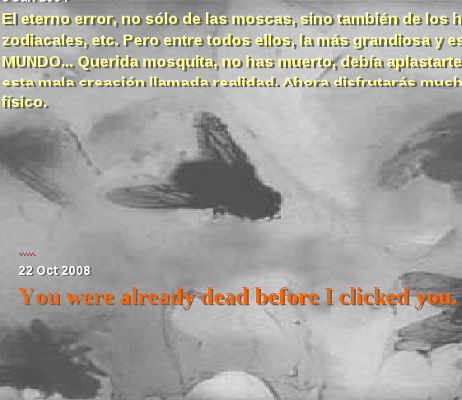ugly girls
No one is sure who the artist is behind mouchette.org, a net art piece that claims to have been crafted by a young girl who is about to turn 13. Dealing with issues of suicide, inapropriate parental relationships, and sexual maturation, this piece subverts the normalizing scripts for how we think of young girls, putting to question to idea of childhood innocence. The character Mouchette is based loosely off the 1967 French film of the same name.
[meet the ugly girls]
In her 1997 article, Witches, Bitches & Fluids: Girl Bands Performing Ugliness as Resistance, Karina Eileraas speaks to the power of “ugly” aesthetics for resistance, especially when appropriated in the work of women. By ugliness, she refers to “an intentional deviation from ‘nice, gentle, pretty’ ways of looking, talking, behaving, and visualizing” (122). Though we could compare this to what Mikhail Bakhtin might call the grotesque, these are aesthetics that particularly violate hegemonic performances of femininity.
The work that might be said to participate in this aesthetic has several distinct characteristics:
- invoke images of witches, bitches, &/or whores
- juxtapose images of traditional femininity with violent or destructive images
- acknowledge or forefront the incoherence of the self/subject
- aggression in movement
- showcase the self-hatred that cultural constructions of women produce or amplify
- flaunt traditionally silent or hidden aspects of the female body
- position the artist or subject as the subject of sexual desire, not the object
- reveal the state of being an “other” to oneself, the “doubleness” within
- a reappearance of body fluids
These qualities in art are both strategic and political. They put to question dominant notions of feminine identity performance, and so-called appropriate content areas for women artists.
Though Eileraas focuses on women rock musicians, this project represents an attempt to identify artists working in other mediums who experiment with similar tropes. Courtney Love, despite her inclusion in Eileraas’ article, is included because of how well she exemplifies the aesthetic qualities I hope to map in each of the other artists.





